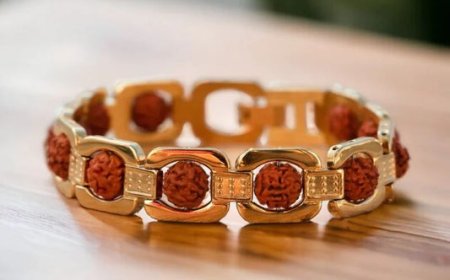How the Kaito Project Is Building a Scalable Web3 Brand Through Smart Marketing

In the rapidly evolving world of Web3, standing out is no easy feat. Blockchain projects must not only deliver innovative technology but also build recognizable, trusted brands that resonate with users, investors, and developers. TheKaito Projecthas emerged as a standout example of howsmart, data-driven marketingcan transform a promising blockchain platform into ascalable and sustainable Web3 brand. Through a careful blend of community outreach, AI-enhanced strategies, brand storytelling, and adaptive positioning, Kaito Marketing has carved a distinctive path toward long-term relevance in a highly competitive landscape.
The Foundations of the Kaito Vision
At its core, the Kaito Project was launched with a vision of unifying decentralized data, knowledge, and AI into a fluid user experience. With a focus onaggregating fragmented Web3 data sources, Kaito brings powerful search and aggregation tools into the hands of crypto users. But technological innovation alone isnt enough to fuel user adoption or community growth. Recognizing this, the team behind Kaito embedded a strongmarketing strategy into the DNA of the projectfrom the outset.
From early whitepaper stages to launch and post-token expansion, Kaito prioritizedmarketing as a foundational pillar, not a secondary add-on. This foresight allowed the project to avoid the fate of many technically advanced but poorly marketed ventures that struggle to gain traction.
The Role of Branding in Web3 Success
In Web3, branding goes far beyond logos and color palettes. It encapsulates thenarrative, identity, and missionthat a community can believe in. Kaito approached branding as aliving systemone that evolves with market sentiment, user needs, and ecosystem shifts. Instead of simply branding itself as another data aggregator, Kaito positioned itself as theGoogle of Web3, a bold claim that it has worked tirelessly to support through performance, product design, and communication.
The Kaito brand identity was built around themes ofclarity, intelligence, and decentralization. These principles were not only reflected in visual assets but also in copywriting, messaging across platforms, and the UX/UI of the actual platform. The brand tone was crafted to beeducational yet empowering, targeting both crypto-native users and curious newcomers.
Community-Led Growth With a Data-Driven Twist
One of Kaitos most notable achievements is how it balancedcommunity-led growthwithdata-driven marketing. Rather than pushing top-down campaigns, the project invested heavily in building a loyal user base throughgrassroots engagementon platforms like Twitter, Discord, and Telegram. However, unlike many DAOs or meme tokens that rely solely on hype and virality, Kaito layered inquantitative insightsto optimize campaigns in real time.
The marketing team used metrics such asretention rates, user funnel behavior, sentiment analysis, and token velocityto fine-tune content, community events, and influencer partnerships. This allowed Kaito to test and scale what worked while eliminating what didnt, ensuring that every marketing dollar and effort yielded measurable results.
Campaigns werent just about volume but abouthigh-converting narratives. For example, Kaito noticed that data aggregation alone didnt excite the broader community, but when framed as a way to unlock hidden alpha or turn DeFi chaos into clarity, engagement skyrocketed. The team didnt change the productthey changed the storyand the difference was profound.
Thought Leadership and Influencer Alignment
Positioning Kaito as a thought leader in the Web3 data space was a calculated move that paid significant dividends. The project producedin-depth contentsuch as technical whitepapers, market research, and educational blog posts aimed at solving real problems in the blockchain information landscape. By consistently publishingvalue-first content, Kaito earned credibility and attracted organic backlinks, newsletter mentions, and podcast interviews.
But content alone wasnt enough to break into the mainstream. To extend reach and social proof, Kaito aligned withtrusted influencers and KOLs (Key Opinion Leaders)who had deep ties to the crypto and DeFi communities. These collaborations were approached not as one-off paid promotions but asstrategic alliances, with long-term value exchange baked into the relationships. Kaito provided access to early features, analytics tools, and custom dashboards, while influencers gave genuine feedback and visibility to their followers.
This two-way approach fostered a sense of co-creation rather than mere sponsorship. It also helped Kaito avoid the pitfalls of low-trust, pay-to-shill influencer marketing, which has plagued many crypto campaigns.
Gamified Engagement and Loyalty Loops
User engagement in Web3 isnt just about trafficits aboutactive participation, retention, and loyalty. Kaito leaned into this by launchinggamified engagement programsthat rewarded users not just for using the platform but for contributing to its growth. Quests, leaderboard competitions, exclusive NFT drops, and social campaigns were carefully structured to triggernetwork effects.
Importantly, these werent gimmicks. Each campaign was designed to deepen user interaction with Kaitos toolssuch as its AI-powered dashboards or personalized alert systems. This created apositive feedback loopwhere user value increased the more they engaged, which in turn drove word-of-mouth adoption and retention.
These mechanisms were powered by the Kaito token ($KAITO), which functioned not only as a reward system but also as anidentity layer and governance asset, allowing users to feel ownership and stake in the platforms future.
AI-Driven Personalization in Marketing
Kaito integratedAI agentsnot just in the core product, but also into itsmarketing workflows. Leveraging user behavioral data, browsing patterns, and engagement signals, the team was able to segment users and deliverpersonalized content experiencesacross email, in-app notifications, and social media.
These AI tools enabled automated copy testing, optimal send-time predictions, and adaptive landing pages that aligned with the users journey stage. As a result, the brand achievedhigher conversion rates and deeper user retention, while maintaining lean operational overhead.
Unlike traditional A/B testing, Kaitos AI-powered marketing system used real-time inputs to continuously iterate on audience segments and messaging tactics. This adaptive,machine-led marketing enginehelped the team stay agile in the face of rapidly shifting crypto sentiment and user expectations.
Multichannel Strategy and Global Presence
Understanding the global nature of Web3, Kaito developed amultichannel strategythat catered to diverse demographics and regions. From localized campaigns in Southeast Asia to technical breakdowns for developer communities in North America and Europe, the brand scaled with cultural sensitivity.
Kaitos presence on platforms like YouTube, TikTok, Mirror.xyz, Farcaster, and even Reddit was tailored to fit each audiences consumption habits. No channel was treated as secondary; each had itsown dedicated strategy, tone, and content format, ensuring relevance and reach.
To further localize growth, Kaito partnered with community managers and ambassadors across different geographies. These local leaders hosted AMAs, translated content, and helped drive participation in regional hackathons and workshops. Thisglocal (global + local)approach ensured scalability without losing authenticity.
Strategic Product Launches and Momentum Building
Smart marketing isnt just about what you sayits also aboutwhen you say it. Kaito carefully timed its product announcements, roadmap reveals, token launches, and community events aroundkey market windows, maximizing visibility and momentum.
For example, its TGE (Token Generation Event) wasnt just a launch; it was an orchestrated campaign that spanned several weeks, with teasers, whitelists, social bounties, early access challenges, and educational series. By the time the token launched, there was already pent-up demand and brand goodwill, leading to robust participation and trading volume.
Momentum was maintained post-launch with regular product updates, ecosystem grant announcements, and roadmap progress reports. Each communication built upon the previous one, creating acontinuous narrative arcrather than disjointed campaigns.
Measuring Impact and Continuous Optimization
Kaito treats marketing like a product: something to bemeasured, optimized, and scaled. The team tracks KPIs across the entire funnelawareness, engagement, conversion, and retentionand feeds these insights back into campaign design.
Tools like Google Analytics, on-chain data dashboards, CRM platforms, and AI analytics engines form themeasurement backboneof the marketing system. Every experiment is followed by retrospective analysis, allowing the team to double down on what works and sunset ineffective tactics.
This culture of continuous learning ensures that Kaito stays nimble and responsive to both market shifts and internal data. It also allows forteam scalability, as knowledge is codified and systematized rather than locked in individual silos.
Conclusion:
The Kaito Project demonstrates thatsustainable growth in Web3 is not a byproduct of hype, but a result of smart, intentional marketing. By integrating branding, AI, community, data, and product into a cohesive system, Kaito has created a scalable framework that other blockchain startups can learn from.
As the Web3 space matures, the projects that survive and thrive will be those that buildgenuine connections with users, adapt quickly to change, and tell compelling stories rooted in real value. Kaito stands as a shining example of whats possible when marketing is treated not as a cost center but as a strategic superpower.































